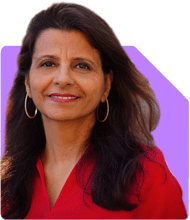Ramalingam Kalirajan |2770 Answers |Ask -Follow
Mutual Funds, Financial Planning Expert - Answered on May 09, 2024
He has an MBA in finance from the University of Madras and is a certified financial planner.
He is the director and chief financial planner at Holistic Investment, a Chennai-based firm that offers financial planning and wealth management advice.... more

Hi Experts, I am 40 years old. I am investing in mutual fund SIPs. My portfolio has following funds each 1000Rs SIP monthly. 1) Quant Infrastructure 2) Quant Mid cap 3) Quant Small cap 4) Quant Active 5) Quant Flexi cap 6) ICICI Pru Infrastructure 7) ICICI Pru Bluechip 8) ICICI Pru Bharat 22 FOF 9) Nippon India Large cap 10) Nippon India Growth 11) Nippon Small cap 12) Nippon India Multi cap 13) Nippon Power & Infra 14) Aditya Birla Sun Life PSU 15) SBI PSU 16) Invesco PSU 17) JM Large cap 18) JM Value fund 19) JM Flexi cap 20) Tata Small cap 21) HDFC Mid cap opportunities 22) Mahindra Manulife Mid cap 23) Mahindra Manulife Multi cap 24) Motilal Oswal Mid cap. Am I good to continue on these funds? Do I need to add/remove any funds for a good portfolio. Please provide your thoughts.
Assessing Your Portfolio:
1. Quant Funds: These funds focus on quantitative strategies, which can be riskier and more volatile. Consider whether the strategy aligns with your risk tolerance and investment objectives.
2. ICICI Pru and Nippon India Funds: These are reputable fund houses offering a range of funds across different market segments. Review the performance and risk profile of each fund to ensure they meet your expectations.
3. PSU Funds: Investing in sector-specific funds like PSU funds increases concentration risk. While these funds may offer potential upside, they are susceptible to sector-specific risks.
4. Mid Cap and Small Cap Funds: These funds have the potential for high growth but come with increased volatility. Ensure they align with your risk tolerance and investment horizon.
Portfolio Optimization:
1. Consolidation: Consider consolidating your portfolio by reducing the number of funds. Focus on high-quality funds with strong track records and consistent performance.
2. Diversification: Aim for a well-diversified portfolio across different asset classes, market caps, and sectors to spread risk and optimize returns.
3. Exit Strategy: Evaluate the underperforming funds and consider exiting those that consistently lag behind their benchmarks or peers. Redirect the proceeds to more promising opportunities.
4. Professional Advice: Consult with a Certified Financial Planner to review your portfolio comprehensively and tailor it to your financial goals, risk tolerance, and investment horizon.
Conclusion:
While your current portfolio includes several funds, it may benefit from streamlining and optimizing for better performance and risk management. By focusing on quality over quantity and maintaining a diversified approach, you can enhance the potential for long-term wealth creation.
Best Regards,
K. Ramalingam, MBA, CFP,
Chief Financial Planner,
www.holisticinvestment.in
You may like to see similar questions and answers below
Ramalingam Kalirajan |2770 Answers |Ask -Follow
Mutual Funds, Financial Planning Expert - Answered on May 09, 2024
Ramalingam Kalirajan |2770 Answers |Ask -Follow
Mutual Funds, Financial Planning Expert - Answered on Apr 22, 2024
Ramalingam Kalirajan |2770 Answers |Ask -Follow
Mutual Funds, Financial Planning Expert - Answered on May 18, 2024
Ramalingam Kalirajan |2770 Answers |Ask -Follow
Mutual Funds, Financial Planning Expert - Answered on May 10, 2024
Ramalingam Kalirajan |2770 Answers |Ask -Follow
Mutual Funds, Financial Planning Expert - Answered on May 09, 2024
Komal Jethmalani |312 Answers |Ask -Follow
Dietician, Diabetes Expert - Answered on May 20, 2024
Patrick Dsouza |276 Answers |Ask -Follow
CAT, XAT, CMAT, CET Expert - Answered on May 20, 2024
Patrick Dsouza |276 Answers |Ask -Follow
CAT, XAT, CMAT, CET Expert - Answered on May 20, 2024
Patrick Dsouza |276 Answers |Ask -Follow
CAT, XAT, CMAT, CET Expert - Answered on May 20, 2024
Patrick Dsouza |276 Answers |Ask -Follow
CAT, XAT, CMAT, CET Expert - Answered on May 20, 2024
Patrick Dsouza |276 Answers |Ask -Follow
CAT, XAT, CMAT, CET Expert - Answered on May 20, 2024
Patrick Dsouza |276 Answers |Ask -Follow
CAT, XAT, CMAT, CET Expert - Answered on May 20, 2024
Komal Jethmalani |312 Answers |Ask -Follow
Dietician, Diabetes Expert - Answered on May 20, 2024
Komal Jethmalani |312 Answers |Ask -Follow
Dietician, Diabetes Expert - Answered on May 20, 2024
Komal Jethmalani |312 Answers |Ask -Follow
Dietician, Diabetes Expert - Answered on May 20, 2024























